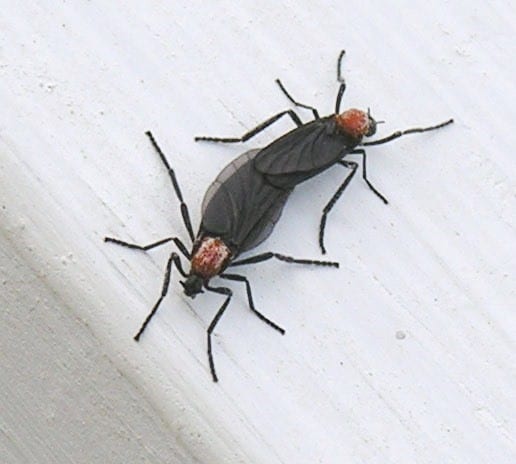A Friday Visit with Jim Korkis: The Real “Love Bugs”
By Dave Shute
Welcome back to Fridays with Jim Korkis! Jim, the dean of Disney historians and author of Jim’s Gems in The easy Guide, writes about Walt Disney World history every Friday on yourfirstvisit.net.
(Note from Dave: this is a follow-up to Jim’s notes on Herbie the Love Bug from last week!)
THE REAL LOVE BUGS AT DISNEY WORLD
By Jim Korkis
The notorious “love bugs” that plague the Walt Disney World property twice a year are actually not “bugs” but are actually a type of fly called the March fly. These odd pests remain coupled, even in flight but facing opposite directions, during and after mating, earning them that politically correct nickname as well as others including the “honeymoon fly” and “double-headed fly”.
In late spring (approximately late April or May) and late summer (usually late August or early September), they generally appear, and the swarm lasts about four weeks. The individual bugs themselves live about three to four days on average. The magnitude of the infestation is often related to the current weather with a dry season sometimes resulting in a shorter infestation.
They were first fully documented around 1940 and were common in Louisiana, Texas, Alabama, Mississippi and Florida. By the year 2000, they could be found in just about all areas bordering the Gulf of Mexico as well as Georgia and South Carolina.
It is speculated that these Central American flies were brought up to the continental United States sometime around 1920 on a cargo ship that arrived in Galveston, Texas or New Orleans, Louisiana and began to spread from that location. It was natural migration that caused the spread.
The urban legend is that they were created as a genetic experiment gone wrong at the University of Florida in an attempt to design a bio-engineered bug to battle the mosquito problem. They do not eat mosquitoes or its larva. Basically, they eat partially decayed vegetation and other decaying organic material in the landscape. In their larval stage, love bugs are beneficial to the environment. Eggs are deposited in decaying vegetation, which the immature bugs eat and enrich the soil.
In the Orlando Sentinel newspaper for September 20, 2013, Philip Koehler, an entomology professor at University of Florida joked “If we’d created them, they would be orange and blue (the university’s colors).” Instead, they are black and red. Nor did they “accidentally” escape from some research laboratory to wreck havoc on locals and tourists.
However, like most urban legends, these stories are often repeated and reprinted and seem to be a logical explanation for these odd but harmless creatures. Perhaps because the University of Florida Entomology Department is a highly-regarded authority on bugs occurring in the American Southeast, people determined that they were somehow responsible.
These insects neither bite nor sting but their sheer abundance make them a nuisance for motorists since they splatter on windshields, clog radiators causing them to overheat, damage paint on cars if left un-removed for several hours, and other annoyances including staining clothing. They are related to mosquitoes, midges and gnats.
Their flights, usually restricted to daylight hours and often around highways, can include hundreds of thousands. They are attracted to the heat of the roadways and the exhaust fumes. Light colors seem to also be a factor in attracting them.
Their huge population causes public concern. However, they are considered non-threatening to humans and crops and merely a nuisance so no government funds have been designated for their elimination or control. Insecticides have proven ineffective because of the vast populations over large areas. Birds seem to be the natural predator.
They don’t buzz, click or hum and are most active in mid-morning and just before dusk. They are not known to be carriers of any type of disease.
Florida is home to a host of annoying bugs. Cockroaches are so large that they get their own name: palmetto bugs. Mosquitoes are a constant problem. Fire ants roam the lawns. In comparison, the love bugs are merely unpleasant.
* * * * *
Thanks, Jim! Love Bugs are like Jersey Week and Pop Warner Week–real, but not as big an issue as many would have you think. I’ve been at Disney World during their seasons dozens of times, and found at the worst they would tickle now and then at the pools.
And come back next Friday for more from Jim Korkis!
In the meantime, check out his books, including his latest, Secret Stories of Disneyland, his Secret Stories of Walt Disney World: Things You Never You Never Knew, which reprints much material first written for this site, and his contributions to The easy Guide to Your Walt Disney World Visit, all published by Theme Park Press.
Follow yourfirstvisit.net on Facebook or Twitter or Pinterest!!






0 comments
Comment by typing in the form below.
Leave a Comment | Ask a Question | Note a Problem